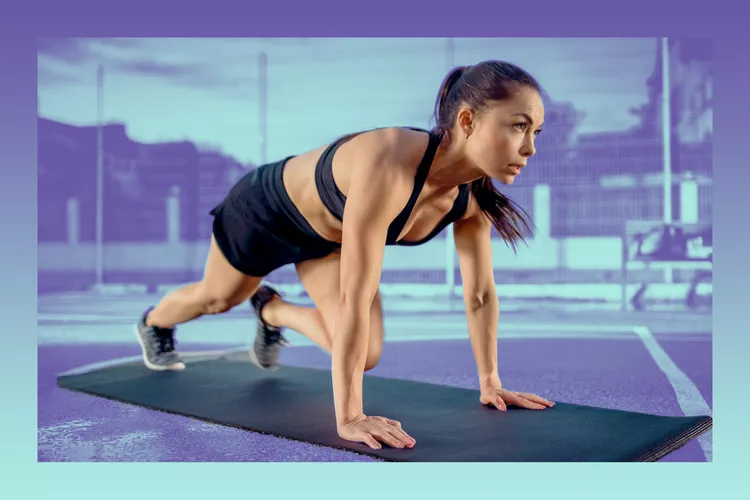Functional fitness has become increasingly popular in recent years, and for good reason. In a world where our daily lives demand movement in various forms, from bending and lifting to reaching and twisting, it’s essential to have a body that can perform these tasks efficiently and without injury. In this article, we’ll explore the concept of functional fitness, its benefits, and the best exercises to incorporate into your routine to improve daily movement.
Introduction to Functional Fitness
What is functional fitness? Functional fitness refers to exercises that train your muscles to work together and prepare them for daily tasks by simulating common movements you might do at home, at work, or during sports. Unlike traditional gym workouts that often isolate muscle groups, functional fitness focuses on movements that engage multiple muscles and joints simultaneously.
Understanding Daily Movement Daily movement encompasses the range of activities we perform each day, from getting out of bed in the morning to lifting groceries, bending to tie shoelaces, or reaching for items on high shelves. Maintaining mobility, flexibility, and strength is crucial for performing these tasks with ease and reducing the risk of injury.
Benefits of Functional Fitness
Functional fitness offers a multitude of benefits that directly impact our daily lives:
Improved Quality of Life: By enhancing your ability to perform daily activities, functional fitness can greatly improve your overall quality of life. Simple tasks become easier and less taxing on your body.
Reduced Risk of Injury: By strengthening the muscles and joints involved in everyday movements, functional fitness can significantly reduce the risk of injury during daily activities and sports.
Enhanced Performance in Daily Tasks: Whether it’s carrying groceries, playing with your kids, or doing household chores, functional fitness can help you perform these tasks more efficiently and with less effort.
Functional Fitness Exercises
There are various types of exercises that fall under the umbrella of functional fitness:
Bodyweight Exercises: These exercises use your body weight as resistance and often mimic everyday movements.
Resistance Training: Using external resistance such as dumbbells, resistance bands, or kettlebells helps build strength and stability.
Mobility Drills: These exercises focus on improving joint mobility and flexibility, crucial for maintaining range of motion.
Balance and Stability Exercises: Enhancing balance and stability is essential for preventing falls and improving overall functional fitness.
Bodyweight Exercises
Squats: Stand with feet shoulder-width apart, lower your body as if sitting back into a chair, then push through your heels to return to standing.
Lunges: Step forward with one leg and lower your body until both knees are bent at a 90-degree angle, then return to standing and repeat on the other leg.
Push-ups: Start in a plank position with hands shoulder-width apart, lower your body until your chest nearly touches the ground, then push back up to the starting position.
Planks: Hold a plank position with your body in a straight line from head to heels, engaging your core muscles.
Resistance Training
Dumbbell Exercises: Include exercises like dumbbell squats, lunges, shoulder presses, and rows to target various muscle groups.
Resistance Band Exercises: Perform exercises like banded squats, bicep curls, lateral raises, and rows to add resistance to your workouts.
Kettlebell Swings: This dynamic exercise targets the hips, glutes, and hamstrings while also improving cardiovascular fitness.
Mobility Drills
Hip Mobility Exercises: Include exercises like hip circles, leg swings, and hip flexor stretches to improve hip mobility.
Shoulder Mobility Exercises: Perform exercises like arm circles, shoulder dislocations, and shoulder stretches to enhance shoulder mobility.
Spine Mobility Exercises: Incorporate exercises like cat-cow stretches, thoracic rotations, and seated twists to improve spine mobility.
Balance and Stability Exercises
Single-Leg Balance: Stand on one leg while maintaining balance for 30-60 seconds, then switch to the other leg.
Stability Ball Exercises: Perform exercises like stability ball squats, plank rollouts, and hamstring curls to challenge stability.
Yoga Poses for Balance: Include poses like tree pose, warrior III, and eagle pose to improve balance and stability.
Incorporating Functional Fitness into Daily Routine
To reap the benefits of functional fitness, it’s essential to incorporate these exercises into your daily routine:
Setting Realistic Goals: Start with achievable goals and gradually increase the intensity and complexity of your workouts.
Scheduling Regular Workouts: Set aside dedicated time for exercise and stick to a consistent schedule to build a habit.
Making Use of Everyday Objects: Incorporate household items like chairs, stairs, and water bottles into your workouts for added resistance and variety.
Progression and Variation
As you become stronger and more proficient in functional fitness, it’s important to continuously challenge yourself:
Importance of Progression: Gradually increase the intensity, duration, and complexity of your workouts to keep making progress.
Ways to Increase Difficulty: Incorporate advanced variations of exercises, increase resistance, or reduce stability to make workouts more challenging.
Precautions and Safety Measures
While functional fitness can offer numerous benefits, it’s essential to prioritize safety:
Consulting a Healthcare Professional: If you have any underlying health conditions or concerns, consult with a healthcare professional before starting a new exercise routine.
Proper Warm-up and Cool-down Routines: Always warm up before exercise to prepare your body and cool down afterward to aid in recovery and reduce muscle soreness.
Listening to Your Body: Pay attention to any signs of discomfort or pain during exercise and modify or stop if necessary to prevent injury.
Tracking Progress
Keep track of your functional fitness journey to monitor improvements:
Keeping a Workout Journal: Record your workouts, including exercises, sets, reps, and any notes about how you felt during the workout.
Monitoring Improvements: Track changes in strength, flexibility, and performance in daily tasks to gauge progress over time.

Common Mistakes to Avoid
Avoid these common pitfalls to get the most out of your functional fitness routine:
Neglecting Proper Form: Maintain proper form during exercises to prevent injury and ensure effectiveness.
Overtraining: Give your body adequate rest and recovery time between workouts to prevent burnout and overuse injuries.
Ignoring Rest and Recovery: Prioritize rest, nutrition, and recovery strategies like stretching, foam rolling, and adequate sleep to support your workouts.
Real-Life Success Stories
Many individuals have experienced significant improvements in daily movement and quality of life through functional fitness. Here are a few inspiring stories:
[Include real-life success stories from individuals who have benefited from functional fitness.]
Conclusion
Functional fitness is not just about looking good; it’s about moving better and living better. By incorporating functional fitness exercises into your routine, you can improve your ability to perform daily tasks with ease, reduce the risk of injury, and enhance your overall quality of life. Whether you’re a fitness enthusiast or just starting your journey, remember that every movement counts towards a healthier, happier you.
FAQs
- Is functional fitness suitable for beginners? Yes, functional fitness can be adapted to any fitness level, including beginners. Start with basic exercises and gradually increase intensity as you build strength and confidence.
- Can I do functional fitness workouts at home? Absolutely! Many functional fitness exercises require minimal equipment and can be done in the comfort of your own home.
- How often should I do functional fitness workouts? Aim for at least 2-3 sessions per week to see noticeable improvements in your daily movement and overall fitness level.
- Will functional fitness help me lose weight? While functional fitness primarily focuses on improving movement and functional strength, it can contribute to weight loss when combined with a balanced diet and regular exercise.
- I have a pre-existing injury. Can I still do functional fitness? It’s essential to consult with a healthcare professional before starting any new exercise routine, especially if you have a pre-existing injury. They can provide guidance on which exercises are safe for you to perform and offer modifications as needed.


